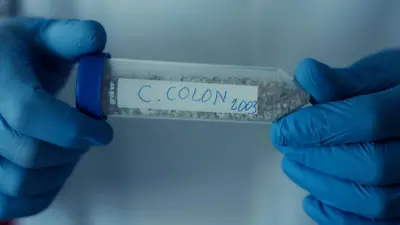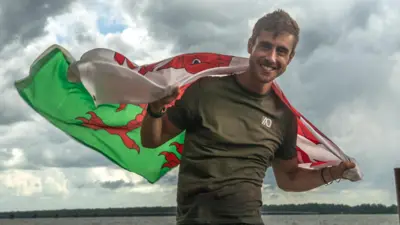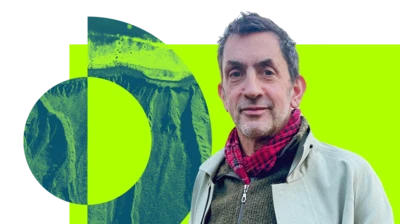We've updated our Privacy and Cookies Policy
We've made some important changes to our Privacy and Cookies Policy and we want you to know what this means for you and your data.
The Solway Firth haaf netters fighting to save a fishing tradition
- Author, Jonathan Peters
- Role, ΒιΆΉΤΌΕΔ Scotland news
The haaf net fishermen of the Solway Firth are maintaining a tradition which dates back more than 1,000 years - but now want help to keep their heritage alive amid fears the practice could die out within a generation.
Haaf netting has been practised on both sides of the Solway Firth for hundreds of years.
The technique for catching salmon is believed to have been brought to Scotland by the Vikings in 900AD, and is still used on the estuary which marks the border between Scotland and England.
The fishermen use a net mounted on a large rectangular frame, which is supported by three legs.
Image source, Annanhaafnets.org
John Warwick, who has been using the method since the 1970s, is part of the small community of haaf netters.
He explains: "There's a beam, which is made of wood, which is 16ft (4.9m), and attached to that is a net, that needs to be carried out over the Solway sands into the estuary by the individual fisherman.
"You stand in the water as the tide ebbs or floods and you hold the net. You're hoping that a fish will swim into it."
When a group of haaf netters first arrives at the shore they "cast the mells", an intricate game which decides where each of them will be positioned.
Image source, Annanhaafnets.org
This can be important in determining how successful a day it will be, which is why some may try to "pockle the draw" - unfairly influence the outcome of the game.
There are currently about 30 haaf netters still using this traditional method.
They also include Barry Turner, who followed in his father's footsteps more than 40 years ago and now hopes to take both his son and grandson out for the first time when the season begins again in May.
But he is worried the practice could soon die out unless the haaf netters are given some legal protection and some form of exemption to a ban on keeping the salmon that they catch.
Image source, Annanhaafnets.org
The number of haaf netters has dwindled since the 1970s, when there were more than 100 living in towns like Annan and Gretna.
In 1965, the ΒιΆΉΤΌΕΔ spoke to haaf netters in Bowness-on-Solway, Cumbria, at a time when the salmon they caught was sold across the country, and the fishers were able to make a good living.
But economic changes since the 1980s saw the trade dwindle, while recent drives to conserve the numbers of fish have also hit the community hard.
The Scottish government introduced measures to protect wild salmon in 2016, which mean that any fish caught in the Solway must be released.
Image source, Annanhaafnets.org
Barry said that allowing them to keep some of the salmon would help enthuse more fishermen to use the technique.
The community is also seeking official recognition that haaf netting is a cultural and historic activity.
The Scottish government is expected to publish a strategy for wild salmon later this year.
However, a spokesperson would not confirm whether this would consider any exceptions for haaf netters.
Image source, Annanhaafnets.org
They said: "We have introduced a number of conservation measures, including new regulations in 2016 which do not allow anglers or netting operations to retain salmon caught in rivers with low stocks.
"We continue to work with key partners, including Fisheries Management Scotland, District Salmon Fishery Boards and Fishery Trusts, to address the many pressures facing our iconic Atlantic salmon."
The lives and history of the haaf netters has been documented by the Annan Common Good Fund.
Its work forms part of a new exhibition at the Devil's Porridge Museum in Eastriggs, Dumfries and Galloway.
John Warwick said they hoped this would create more interest in haaf netting and attract some younger blood which could help secure its future.
They also wanted to create a record for posterity in case the technique does eventually die out.
But John said: "It's been going for over 1,000 years. We don't want to be the last generation."
Barry added: "It would be an act of vandalism, cultural and historic vandalism, if this traditional activity which is unique to the inner Solway dies.
"Please save us, we're desperate for protection.
"We're unique, we're only 30 people. Give us a small quota so that we can continue."
The exhibition runs until the end of March.
Top Stories
More to explore
Most read
Content is not available








